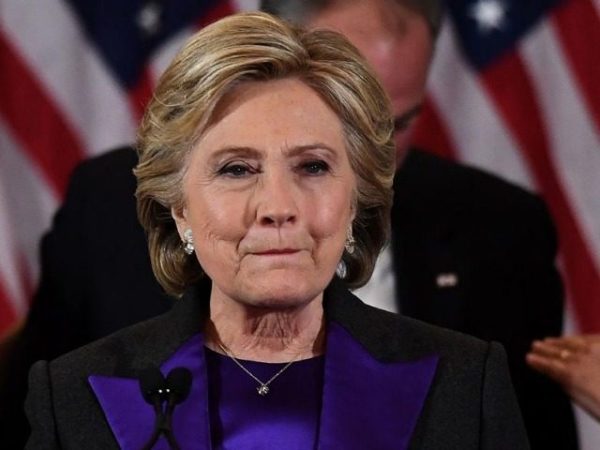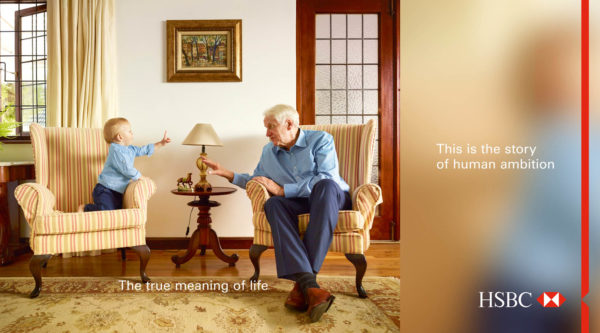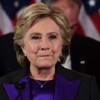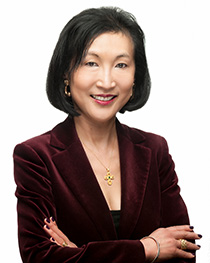
It’s been exactly a week that the whole world has still been digesting Donald Trump’s shocking win in the U.S. Presidential Elections. I went to bed at around 1 a.m. on elections night when Hillary’s loss was inevitable. On Wednesday, the day after the elections, together with many of my American, Canadian and Asian progressive friends, I felt despondent and depressed. It was a sad day for America, for democracy and for us women!
Six months ago, I was so confident of Hillary’s win that I booked my condo’s party room and a caterer for an all-women celebration party to take place on the evening of November 11. I figured that a celebration on elections night would have been impossible due to how late usually the voting stations closed and the time difference between the West and East coasts. I also thought that two days after elections night would have been perfect because that would have given us one day to catch up with our sleep and in the very low probability of Hillary’s loss, I could still have canceled the party and caterers with 24 hours’ notice.
In spite of FBI Director James Comey’s announcements regarding the so-called new evidence that might be linked with Hillary Clinton’s email investigation, twice within two weeks leading up to the elections, all mainstream media, pollsters and political pundits still predicted that Hillary would have a huge win. The New York Times‘s editorial and OpEds in the week leading up to the elections not only predicted that Hillary would be the winner, but began speculating on who President Clinton would pick as members of her cabinet. Even The Globe and Mail followed the same train of thought. On the day before the elections, the reputable statistics-driven news website FiveThirtyEight, which never got their predictions wrong in previous Presidential elections, forecast that Hillary’s chance of winning was 71.4 percent versus Trump’s 28.6 percent.
Only two people were right with their predictions – journalist Henry Louis Mencken about a century ago and filmmaker Michael Moore in July 2016. Mencken said in The Baltimore Evening Sun, on July 26, 1920, “As democracy is perfected, the office of the President represents, more and more closely, the inner soul of the people. On some great and glorious day, the plain folks of the land will reach their heart’s desire at last, and the White House will be occupied by a downright fool and a complete narcissistic moron.” That day has finally come some 96 years later!
Michael Moore first predicted Trump’s victory in July during an interview on HBO’s Real Time With Bill Maher. He repeated his prediction on his website, writing: “This wretched, ignorant, dangerous part-time clown and full-time sociopath is going to be our next president. President Trump.” In an open letter titled, “Midwest Math, Or Welcome To Our Rust Belt Brexit,” Moore said Trump will win the hearts of voters in the Upper Midwest by attacking Clinton’s stance on free trade and policies that have “royally screwed the people of these four states – Michigan, Ohio, Pennsylvania and Wisconsin.” Moore was bang on even though he said never in his life has he wanted to be proven wrong more than he did four months ago.
The world’s biggest nightmare eventually happened as a bombshell – not only did Trump win, but he managed to sweep the swing states as well as break the Democratic firewall in traditionally blue states such as Pennsylvania, Michigan and Wisconsin! I went to bed on Wednesday morning with a broken heart and a last image of John King’s electoral map on CNN before I switched off my TV – a sea of red against patches of blue. I woke up just in time to watch Hillary’s concession speech. It was difficult to hold back tears but I didn’t lose it.
What really got me was that this election’s results have made me lose faith in the mainstream media, in pollsters and in the U.S. electorate! How could everybody be so wrong? In spite of Trump’s lewd remarks and his track record of sexually groping women, Hillary Clinton was unable to galvanize female voters any more than previous Democratic nominees. According to The Globe and Mail based on exit polls conducted by Edison Research on behalf of a consortium of U.S. media organizations, women voted for Hillary at a similar rate to their support for President Obama in 2012. They gave her a 12-point margin, 53 percent to 41 percent. Among her own demographic group, white women, 53 percent voted for Trump while 43 percent voted for Hillary. Trump’s distasteful remarks and allegations of inappropriate touching did not seem to have hurt him at all with that demographic.
In spite of Trump’s blatantly racist remarks and his promise to build a wall on the border with Mexico and crack down on immigration, Hillary’s support among Latino voters actually declined slightly at 65 percent compared to 71 percent for President Obama in 2012. Hillary dominated with black voters, tallying 88 percent versus Trump’s eight percent. But it was still a decline compared with the 2008 and 2012 elections, when African Americans supported Obama at 95 percent and 93 percent respectively.
Hillary didn’t do that badly with young people, but could not match the excitement generated in previous campaigns by President Obama or perhaps even Bernie Sanders. At 55 percent among 18-29-year-olds, she trailed President Obama’s 2008 numbers by more than 10 percentage points. Boomer and seniors voters, aged 45 and up, were solidly for Trump, but at rates comparable to the results for Mitt Romney in 2012.
With so many retirees in Florida, more than one in five voters are over 65 and voted 57 percent to 40 percent in favour of Trump. The youngest group, the Millennials, opted for Hillary at 63 percent versus 27 percent for Trump. But this group only constituted 10 percent of electors in Florida.
There was no surprise that the divide between urban and rural was a big part of the national result. In cities larger than 50,000 people, Hillary won 59 percent of the vote, while her share declined to 45 percent in suburbs and 34 percent in smaller or rural communities. Even though white people may compose a declining share of the U.S. population, they still make up by far the largest group, and they were key to Trump’s victory – white people favoured Trump by a margin of 58 percent to 37 percent. His margin among whites without a college degree, 67 percent to 28 percent, is the largest since the election of 1980.
Another surprise came when everybody thought that Trump’s victory represented a revolt of the economically marginalized. But, in fact, Hillary had a health lead among lower-income voters. Those who earn less than $30,000 voted for Hillary by a margin of 53 percent to 41 percent over Trump. Trump led at all levels of annual income above $50,000. Who would have thought that his margin was largest at the middle-income level, $50,000 to $100,000?
We can analyse why Hillary lost to the most minute detail after the elections, but according to early exit poll results, 42.1 percent of eligible American voters stayed at home and only 57.9 percent voted. If these early numbers stay the same during the final tallying, the voter turnout was slightly higher than the 57.5 percent in the 2012 Presidential election. Hillary’s numbers continue to rise among the popular votes, but they did not matter because Trump won convincingly in the electoral college votes. The polling industry is facing difficult times right now having been proven so wrong over and over again – Trudeau’s win in the Federal elections in Canada last year, Brexit and now the 2016 U.S. Presidential elections!
Among the many mea culpas from the mainstream media, the most convincing excuse I’ve heard so far is that their arrogance has led them to underestimate Trump’s chances of victory. Jonathan Kay, Editor-in-Chief of The Walrus magazine, explained on CBC’s The National earlier this week that the entire mainstream media considered Trump and his crazy remarks as a side show which, in fact, had so tragically taken over as the main show. The media’s arrogance also led them to totally miss what the American people have been saying. The mainstream media, most of whom are progressive liberals, underestimated the anger of white American voters. They might have sent reporters to the Rust Belt and the swing states, but they were not really listening! Once again, the coastal states of the Eastern Seaboard and California do NOT represent America and Trump’s win was a wake-up call.
I believe that Van Jones of CNN best summed up the biggest reason for our despondence after the elections – how could parents wake up the morning after Trump’s victory to explain to their kids why a bigot, a bully, a misogynist and a rapist has won the elections to become the 45th President of the world’s most powerful country? With his victory, America has just lost its moral compass – perhaps Trump was right when he once said during the campaign that “I could stand on New York’s Fifth Avenue and shoot somebody and I still wouldn’t lose any voters!”
But the fight for democracy, equality for all and women’s rights must go on! As Kate McKinnon, who played Hillary Clinton on Saturday Night Live, said after singing “Hallelujah” by Leonard Cohen, “I’m not giving up and neither should you.” Vermont Senator Bernie Sanders also advocated a positive approach, “What you do now is get heavily involved in the political process. When millions of people stand up and fight back, we will not be denied.”
Already, the American Jewish Committee and the Islamic Society of North America have teamed up to form a new national group of leading Jewish and Muslim Americans – The Muslim-Jewish Advisory Council – to jointly advocate on issues of common concern. Americans are also pouring cash into organizations that could be under threat during the Trump administration, or that support minorities that could be the target of hate crimes. Forbes magazine reported that the American Civil Liberties Union pledged to contest Trump if his administration follows through on campaign pledges to deport undocumented immigrants, ban the entry of Muslims, and punish women for abortions. Since Trump’s win, the organization and its affiliates have seen more than 33,000 donations totaling over US$1.9 million to aid its fight. The fight for moral justice has just begun. Let’s hope that our U.S. neighbours down south will show Trump and the world that America is much better than this ugly election!











